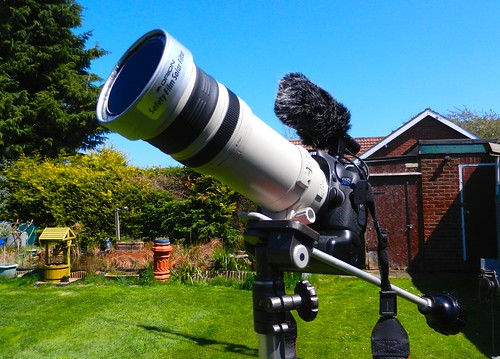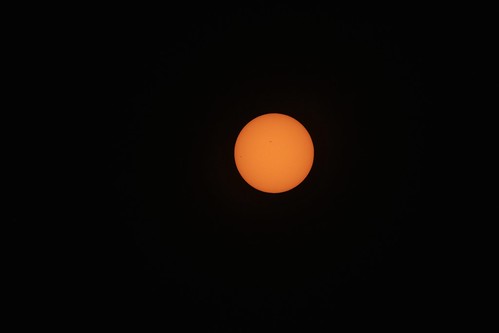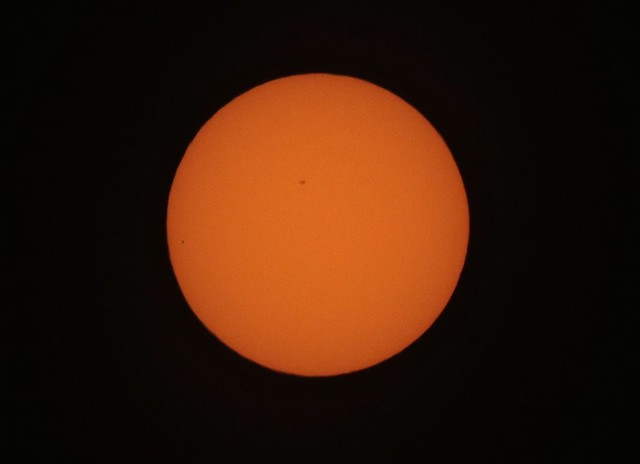Firstly it should be noted that you should not point a camera or look directly at the Sun without a filter designed for that purpose otherwise both could be damaged beyond repair very quickly. This is the Canon fitted with a solar filter which cuts down the received light about 10,000 times:

On to the photographs.
Even with a 400mm lens the Sun only takes up a small part of the view:

Cropped sections.
The first taken about 1 p.m. local time:

There are two blobs to see.
The tiny planet Mercury is near the edge of the Sun about 9 o'clock.
The other is Sunspot number 2542.
This view was taken about 2.45 p.m. local time:

The position of the Sunspot has moved slightly with the rotation of the Sun.
Mercury has moved further as it transits across the Sun.

I was wondering if you got it. A job well done.
ReplyDeleteAdrian: Mercury is so small it took a while to work out whether I had managed to get it.
DeleteNicely captured John.
ReplyDeleteFrank: Thank you. At least I remembered to have a go this time.
DeleteYou got it! Great stuff.
ReplyDeleteSimon: For once clear skies gave me a chance.
DeleteWonderful images!
ReplyDeleteWilma: Thank you. I like the occasional challenge.
Delete